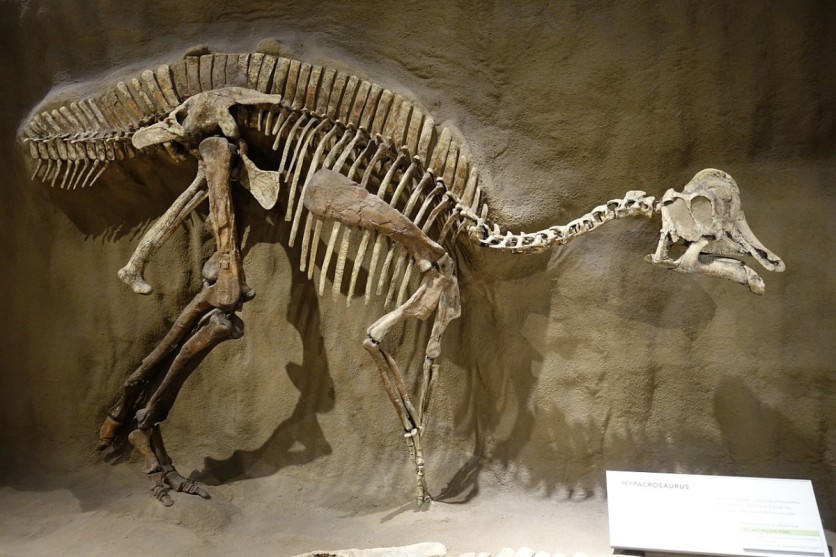Researchers have reportedly discovered some preserved DNA in the skull of a Hypacrosaurus. The said skull came from the Cretaceous period and is a duck-billed herbivore that was almost but not quite as big as a Tyrannosaurus.

It was found in a fossil that dates back 75 million years ago
Published in the Scientific Journal National Science Review, the study has claimed that some very old chromosomes and DNA that resembles cell nucleus have survived after cell division in fossils. The preserved DNA was found from a skull of a baby dinosaur in Montana, according to researchers from the Chinese Academy of Sciences in Beijing and North Carolina University.
Lead author of the publication, Paleontologist at the Chinese Academy of Sciences, Dr. Alida Bailleul, has stated that these new and exciting outcomes have added to growing evidence that some cells and their biomolecules can survive in deep-time. The team suggests the DNA they have found can really be preserved for millions of years.
Though some scientists have a contradictory opinion
A molecular biologist by the name Mary Schweitzer, who helped with testing and the study's co-author, said that she was very hesitant to actually declare that what the found on the fossil was even DNA. She told National Geographic that she was not even willing to call it DNA because she was too cautious and did not want to overstate and misrepresent the results that they had with the testing.
Schweitzer did use DNA stains to try and evaluate the preserved samples that were in the fossil, and the results found certain cells that include two, which appeared to be dividing.
Read Also: Woah! This Octopus-Inspired Robot Arm Can Open Anything And Find Ways To Escape When Trapped!
Bailleul says that these findings that they have after carefully testing them should help flare more research into finding DNA in ancient samples such as this that came from a fossil. "We hope that this study will encourage scientists working on ancient DNA to push current limits and to use the new methodology in order to reveal all the unknown molecular secrets that ancient tissues have," she said. It is still pretty much unclear whether these researchers and scientists can actually sequence the DNA sample as it has never been done for anything that is older than 700,000 years.
These kinds of results from research by scientists are utterly amazing. These fossils hold so much of the world's history from animals to Earth itself. Though there is still a lot that scientists do not know from Fossilization, this discovery made by the team is another big leap for history. Hoping that technology can ease the way and help scientists learn more about dinosaurs and other species in the future and also pave the way for humans to understand furthermore what happened to our planet and these extinct creatures millions of years ago.

![Apple Watch Series 10 [GPS 42mm]](https://d.techtimes.com/en/full/453899/apple-watch-series-10-gps-42mm.jpg?w=184&h=103&f=9fb3c2ea2db928c663d1d2eadbcb3e52)


